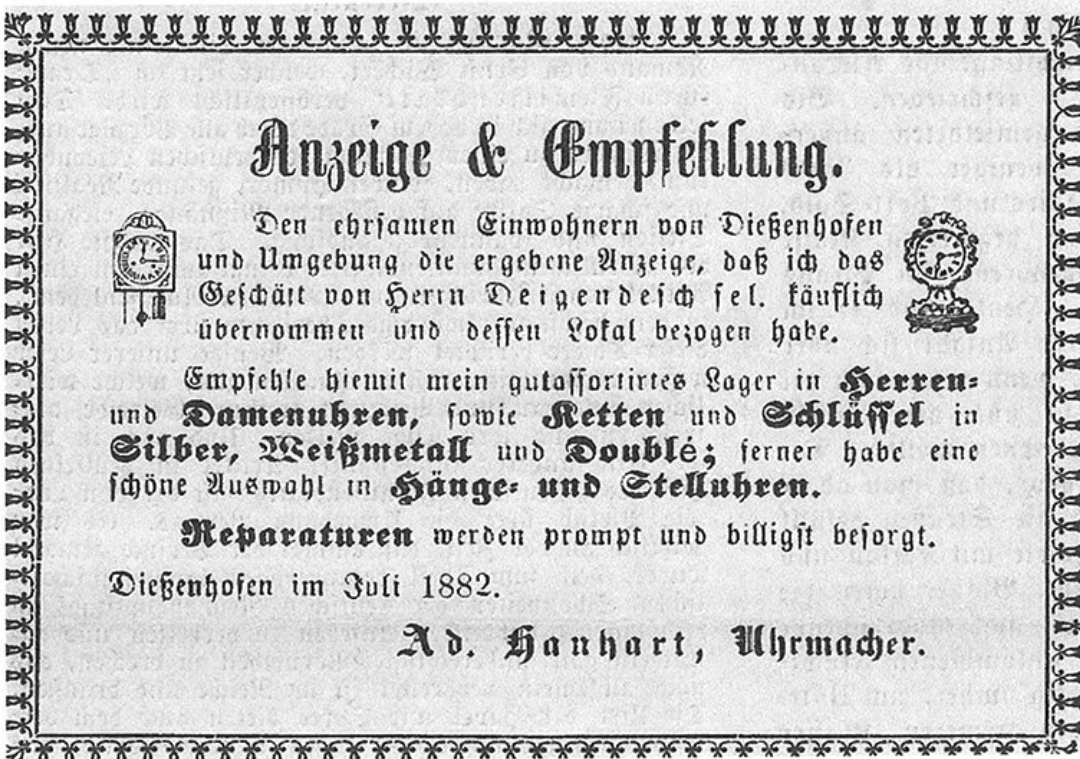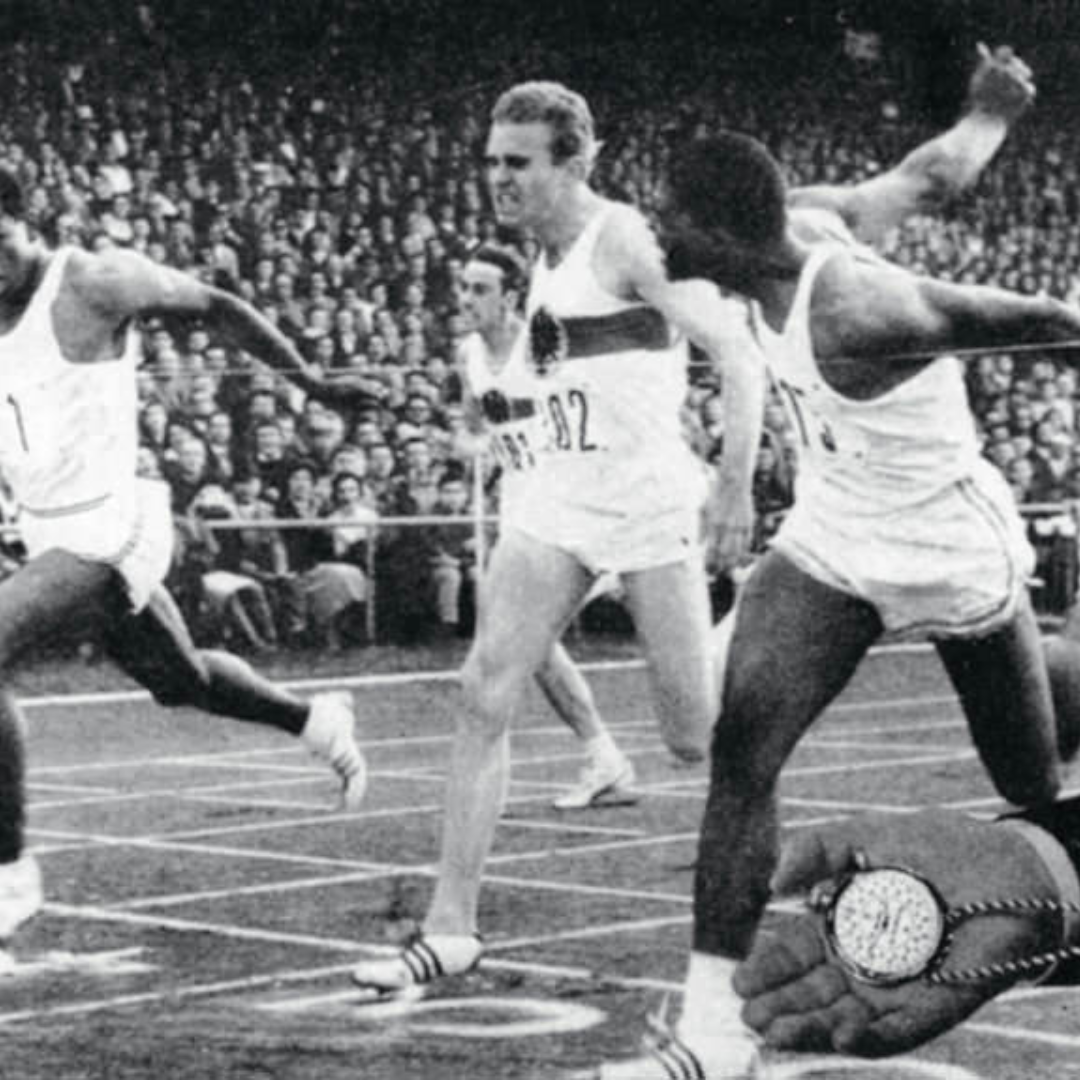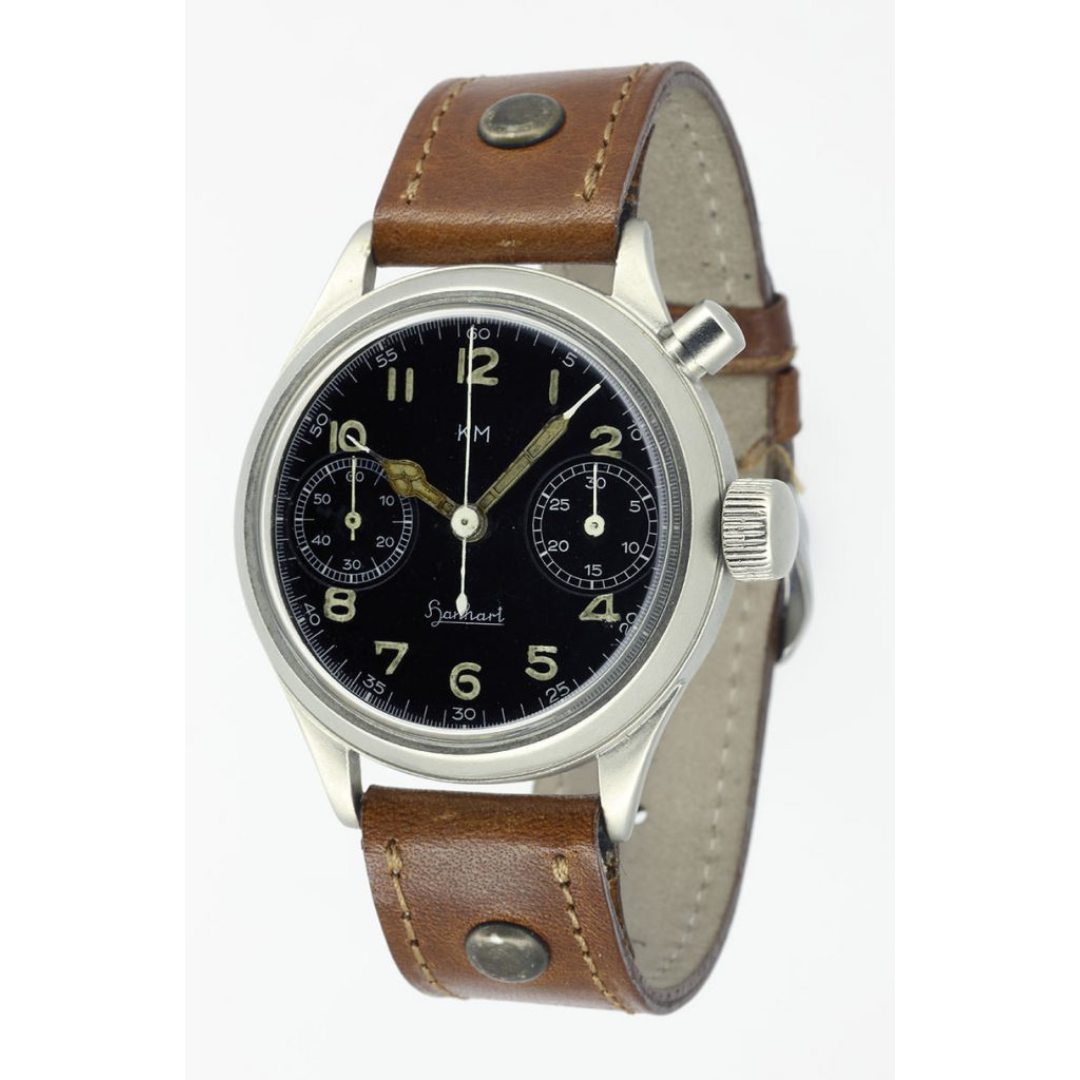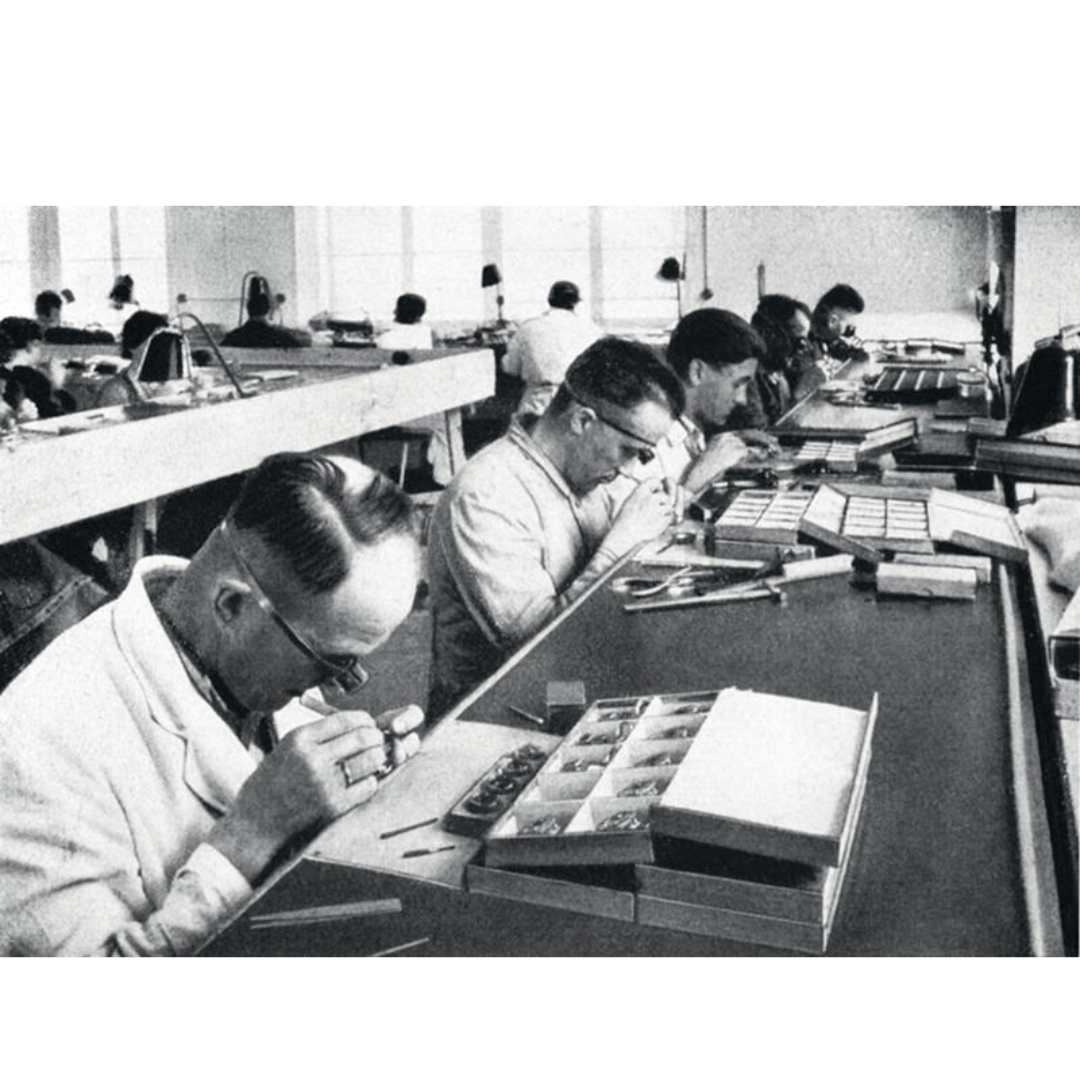The sun glows red in the evening sky over the little town of Diessenhofen, located on the River Rhine in northeast Switzerland, as the watchmaker Johann A. Hanhart sits down, takes out a pen and paper and drafts an announcement. He “respectfully informs the worthy residents of Diessenhofen and surroundings” that he has purchased a business and its premises at the town’s Hauptstrasse with the intention of opening a watch shop.
Relocation of the manufactory in 1902 to Schwenningen in southern Germany, the stronghold of watchmaking.
The innovative epoch of Hanhart had its beginnings in 1920 when son Wilhelm Julius joined the company of this father.


The sport-loving Willy Hanhart introduced the world’s first reasonably priced mechanical stopwatch in 1924. He had participated in a track and field sports meeting in the previous year, for which the organizers had great difficulty in finding even four stopwatches of varying quality. These timepieces came exclusively from Switzerland at that time and were only available at exorbitant prices – if at all – since essentially only individual watches were produced to order. The young man became so irritated by this that he decided to manufacture stopwatches himself. In association with a watchmaker, he conceived and designed the first reasonably priced mechanical stopwatch – and in doing so he pressed the start button for the company that leads the stopwatch sector to this day.

Launch of the split-second stopwatch
In 1935, Hanhart launched a complicated split-second stopwatch. New and increasingly intricate models went into production. Even in those days, first-class precision in perfected form was one of the maxims of the company.
The single-button “Calibre 40”
1938 marked the start of a new epoch in the history of the company – when the first Hanhart chronograph model entered series production. This was the single-button “Calibre 40”, which would soon become established as the company’s main product and its new re-issue as the “Primus” model has become a coveted collectors’ piece and connoisseur’s item.

Hanhart employs 200 employees
In 1939, Hanhart was able to increase its sales. At this time they had already employed 200 employees.


